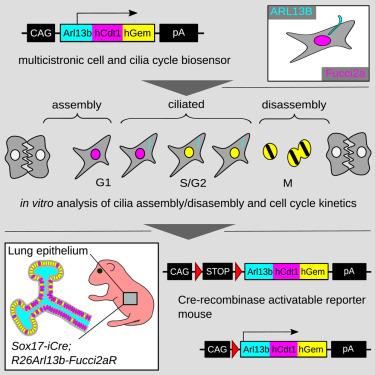Real time changes in cilia during cell division
Seeing is believing: monitoring real time changes in cilia during cell division in our bodies: November 2018

Cilia are small hair-like structures found on almost every mammalian cell type and play important roles in human development and disease. Packed full of signalling components akin to tiny antennae, cilia have been proposed to act as cell timers, keeping the brakes on cell division until the right growth cues are received. This may be important in shaping the size of our organs, like our brains or lungs in development, but also in terms of cancer.
Loss of cilia have been reported in several human tumor types, where cells divide unrestrictedly, but there are other examples of cancer types where cilia become extra long, becoming supercharged signalling machine. The machinery that drives cilia growth and cell division are shared, coupling these two fundamental processes.
In a study published in Developmental Cell, the Mill and Mort teams from the University of Edinburgh and University of Lancaster have developed multi-component fluorescent biosensor that allows us to simultaneously ‘light up’ both cilia and stage in the cell cycle in mice. This allows live imaging studies of how these two processes are interconnected in health as well in models of human disorders, the ciliopathies where mutations in genes cause defects in cilia, or during cancer initiation and progression. These will allow researchers to carry out fundamental studies exploring how changes to cilia length and dynamics affect speed of division (or tissue growth) or the outcomes of division depending on the orientation of division.
We hope these studies will help researchers build a more detailed picture of cilia in human disease and help monitor novel therapeutic approaches.
Links
Pleasantine Mill research group
Original research article: https://doi.org/10.1016/j.devcel.2018.10.027


